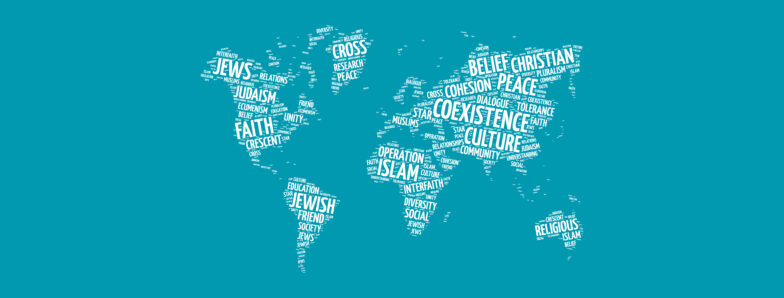World Religions: The Prince and the Lord
Among the world’s great religious leaders, two came to be viewed as representing almighty God in human form. In traditional Hinduism, the god Vishnu appeared or descended into human form as Krishna. In historic Christianity, Jesus Christ entered human history as God Incarnate (the God-man: a single person with both a divine and human nature). Yet while both are recognized (in some sense) as the divine in human form, the identity, mission, and message––ultimately, the hope––of these two figures is quite dissimilar.
The Hindu Prince
Scholars debate whether Prince Krishna was an actual historical figure whose life is covered in deep Hindu mythology or whether his existence was totally mythological. Those Hindu scholars who argue for a historical Krishna say that he lived about 5,000 years ago.1 Yet modern-day Hindus show little interest in the “historical” Krishna, the way contemporary Christians inquire about the historicity of Jesus.2
Krishna’s life and identity in sacred Hindu literature passes through three basic stages. First, the writings of the Bhagavata Purana describe Krishna as a dancing infant and as a young boy who plays a flute. Thus, images of Krishna portray him in his youth with black or dark blue skin and holding or playing a flute. In the second stage, this same text presents him as an adolescent playboy associated with the cow maidens, where Krishna is seen as a divine herdsman (images often depict Krishna with cows, which are considered sacred in India). Third, in the Bhagavad-Gita (“Song of God”), Krishna appears as a prince who offers moral and spiritual guidance and reveals himself as the ultimate King Krishna. In summary, the Hindu sacred writings thus “portray him in various perspectives: a god-child, a prankster, a model lover, a divine hero, and the Supreme Being.”3
Bhakti Hinduism
The religion of Hinduism is tolerant, inclusivistic, and eclectic. Hinduism offers a philosophical pantheism (all is god and god is all) along with an almost limitless (330 million) pantheon of popular gods (polytheism). But Hinduism also proposes the “path of devotion” or attachment to a single deity. Christian scholar of world religions Winfried Corduan explains,
This school of thought became known as Bhakti, which means “loving attachment.” The essence of its teaching is that the love of a god or goddess provides salvation to these who love him or her alone. The roots of Bhakti Hinduism go back at least as far as the Bhagavad-Gita, a poem that forms a part of the Mahabharata, a lengthy epic composed around 200 B.C.4
Krishna is arguably the most popular of the Bhakti gods. And in this form of Hinduism adherents believe that a person can have a relationship with Krishna that is characteristically similar to theism (an eternal relationship with a personal deity). The Hare Krishna movement (ISKCON: International Society for Krishna Consciousness), which became popular in America in the 1960s, is an expression of Bhakti Hinduism.5 Thus in ISKCON devotion to Krishna alone is necessary for Moksha (salvation, which entails breaking the cycle of rebirths or reincarnation).
Hinduism’s Three Ways to Moksha
- The Way of Works (Vedas, observing laws and rituals, priests)
- The Way of Knowledge (Upanishads, meditation, withdrawal)
- The Way of Devotion (Bhagavad-Gita, worship of a god)
ISKCON Essential Teachings6
- Krishna is the supreme form of a personal god (untraditional monotheism). Vishnu is considered an avatar of Krishna.
- Salvation is achieved by continually chanting the Krishna mantra “Hare Krishna” (1,000 times a day).
- The Bhagavad-Gita is sacred scripture.
- Devotees must observe a life of pure devotion to Krishna, which includes abstaining from meat, caffeine, sweets, and sex for pleasure.
- Devotees are expected to disseminate the literature of ISKCON.
Five Ways Krishna and Jesus Differ
Krishna holds the title “Prince” for his regal representation of a divine figure. Bhakti Hinduism now stands at the center of contemporary Hinduism, with Krishna as its most represented deity. Meanwhile, the New Testament title “Lord” (kyrios) is the Greek term used to translate the Hebrew name for YHWH (Israel’s personal God). Thus the historic Christian claim “Jesus is Lord” conveys the meaning “Jesus is God.”
- History: While the actual existence of Krishna relies mostly or exclusively upon speculative Hindu mythology, Jesus of Nazareth’s life, death, and resurrection is attested to both in the historical documents of the New Testament and in certain secular works of history.
- Nature: While Prince Krishna is considered an appearance or the descent of a deity (an avatar), Jesus Christ declared himself God in human flesh.
- Character: Prince Krishna is said to be loving and compassionate, nonetheless the stories about him exhibit human-like flaws, thus showing he lack of moral perfection. The Lord Jesus Christ, on the other hand, was declared even by some of his enemies to be morally blameless.
- Mission: Hindu literature describes Prince Krishna’s mission as one of an inspiring divine hero. The Lord Jesus Christ’s mission was to rescue sinners by providing a final atonement for sin through his death on the cross.
- Role: While Krishna is said to be gracious and merciful in nature, he provides no means of redemption. In stark contrast, the Lord Jesus Christ’s life, death, and resurrection all focus on redeeming lost sinners.
- State: Prince Krishna either survives in legend only or is dead. Unlike all other religious leaders, the Lord Jesus Christ has been resurrected from the dead and reigns as eternal King.
Bhakti Hinduism offers a convoluted, uncertain hope of life after death but with the mythological Prince Krishna. Historic Christianity, on the other hand, offers real hope of salvation from sin through the historical person of Jesus Christ who demonstrated his Lordship by rising from the dead.
Comparison of Religions
| Historic Christianity | Bhakti Hinduism |
| Problem: Sin (rebellion) | Problem: Karma |
| Need: Redemption | Need: Moksha |
| Solution: Faith | Solution: Devotion |
| Ultimate: Personal Redemption | Ultimate: Attachment to god |
| Assurance: Yes | Assurance: No |
| Deity: Trinitarian Monotheism | Deity: Untraditional Monotheism |
Endnotes
- Stephen E. Ambrose, American Heritage New History of World War II (New York: Viking, 1997), 601.
- John Keegan, The Second World War (New York: Penguin, 1989), 5.






